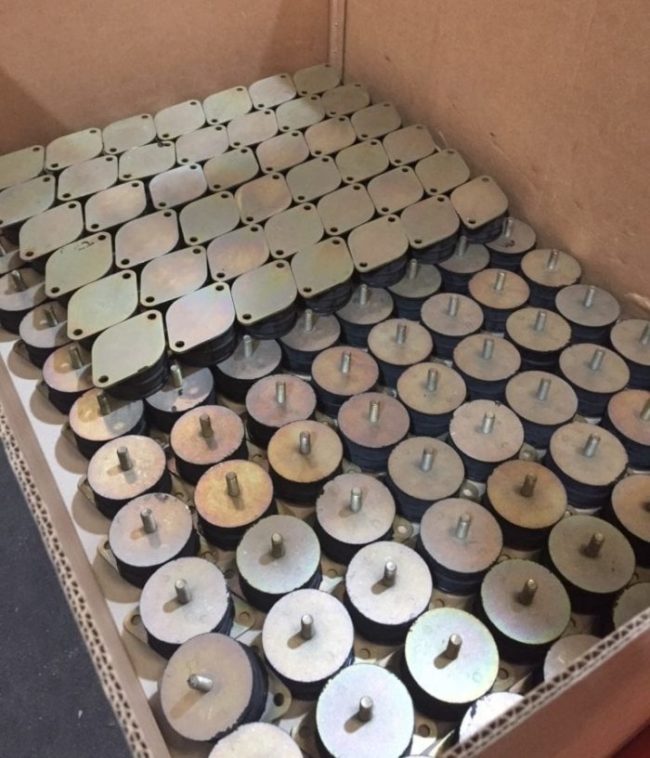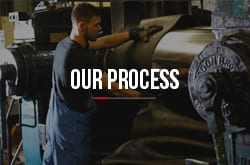A Short Guide on the Storage of Rubber and Rubber to Metal Components
Many properties of rubber make it the ideal material for anti-vibration products. To conserve these properties it’s important that the rubber is protected from environmental conditions, such as light and heat, that might otherwise degrade it. Consideration should also be given to protecting the metal that the rubber is often bonded to, as this can also be affected by these conditions.
As discussed in our previous post regarding rubber compound selection, some additives can be used to protect the rubber against light, heat and chemicals while the compound is in use. This blog is a guide to the measures that should be put in place when storing components prior to use, for them to function properly for a long time.
Rubber Storage
The storage of rubber products in humid storage rooms should be avoided as, if condensation occurs, damage can be caused to the product. The relative humidity should be below 65%. Solvents, fuels, lubricants, chemicals, acids, brines, disinfectants and any other similar products should not be allowed in the storage room, to prevent any damage occurring. Rubber products made of certain chloroprene rubber types, such as H Mounts, should be stored at temperatures above 12°C.
Rubber products should be stored without tension, compression or any other deformation, as stress promotes a lasting deformation as well as the development of cracks and damage. Rubber solvents should be stored in a special room in compliance with the official regulations for storage and transportation of inflammable liquids.

Rubber to Metal Bonded Products
The storage of rubber to metal parts has to comply to DIN 7716 ( the storage standards guideline for storage of more than 6 months). The storage room should be cool, dry, dust-free and moderately ventilated and the temperature in the storage room can be between –10° C and 20° C. A higher temperature is permitted, but only for a short time and exposure to direct sunlight must be avoided. The components should be protected against constant air supply, especially to protect the rubber against harmful ozone.
Particular metals, especially copper and manganese, have a damaging effect on rubber products. Due to this, rubber products should not be stored directly with these metals but should be protected by packaging or by covering them with a layer of a suitable material, e.g. paper or polyethylene.
The material of the containers and the material for packaging and covering should not contain any damaging ingredients for the rubber products, such as copper or copper-containing alloys, petrol, oil or suchlike. Foils containing softeners are not permitted for use as packaging material. If rubber products have to be powdered, the powder should not contain any harmful ingredients for rubber products. Appropriate materials for powdering purposes are Paris white, talcum powder, fine grained mica flour and rice starch.
Please don’t hesitate to get in touch with our team if you have any more questions regarding correct storage of any rubber or rubber to metal compounds. Alternatively, you can look online at our collection of anti-vibration mounts and vibration control components, for a range of industries including construction, defence, aerospace, rail, automotive and marine.










